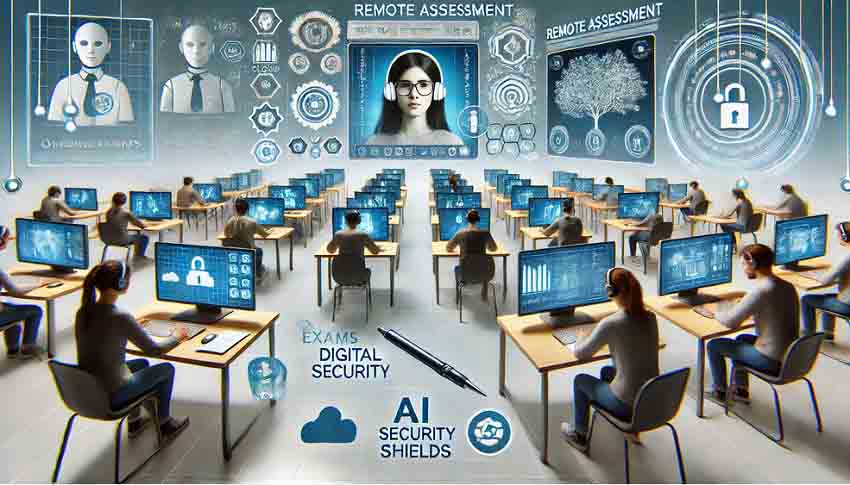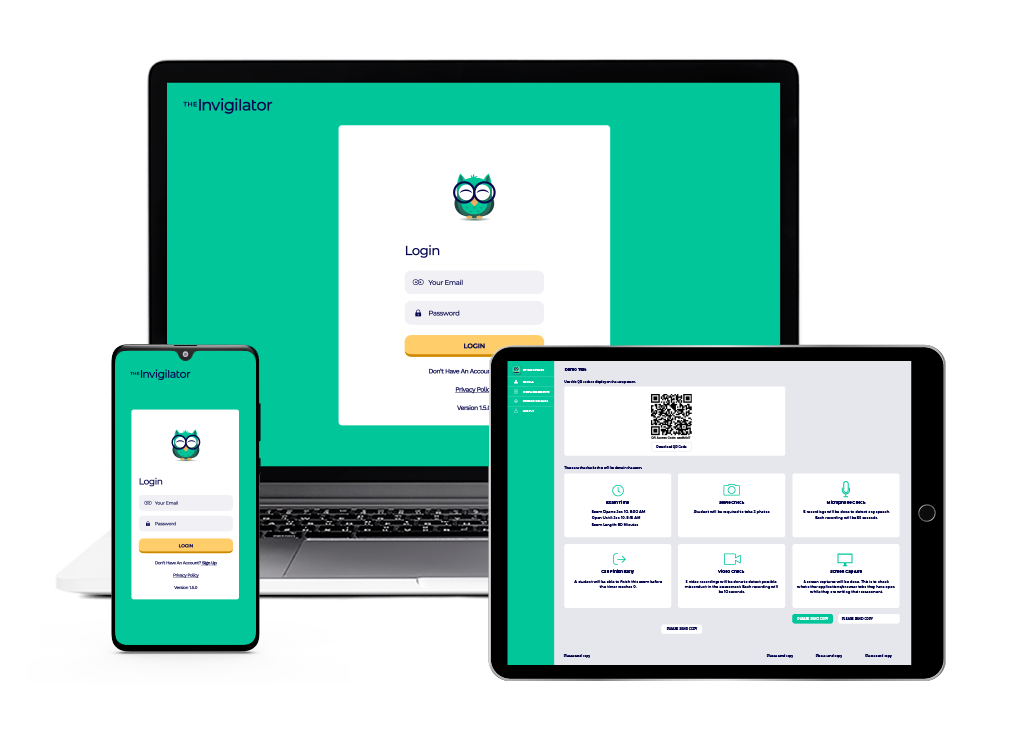The Future of Remote Assessments in Education: Technology, Trends, and Transformation
As education continues to evolve, remote assessments have become a key element of the academic landscape. The rise of online learning, accelerated by the global pandemic, has propelled educational institutions toward digital solutions that offer flexibility, accessibility, and scalability. With this shift, remote assessments are now a fundamental part of how students are evaluated. As we look to the future, the integration of advanced education technologies will continue to shape the way assessments are conducted, monitored, and secured. In this article, we will explore the trends driving the future of remote assessments and predict what lies ahead for online exams.
1. The Rise of Remote Assessments in Education
Remote assessments are not a new concept, but their adoption has grown significantly over the past decade. Initially driven by the rise of online learning platforms and distance education, the shift to remote assessments was accelerated by the COVID-19 pandemic. Schools and universities across the globe were forced to adapt to online exams almost overnight, leading to the widespread acceptance of remote assessment tools.
Why Remote Assessments Matter:
- Flexibility: Remote assessments allow students to take exams from any location, offering flexibility that traditional in-person exams cannot provide. This is particularly beneficial for students in different time zones or those facing mobility challenges.
- Accessibility: Remote assessments expand access to education for learners who might not have the means to attend a physical exam centre.
- Scalability: Online assessments make it easier for institutions to scale their exam processes, accommodating larger numbers of students while maintaining control over exam integrity.
As the demand for remote assessments continues to grow, educational institutions are exploring new ways to improve the security and reliability of these systems, with education technology playing a critical role.
2. The Role of Education Technology in Shaping Remote Assessments
Education technology (EdTech) has been a driving force behind the growth of remote assessments. With advancements in AI, machine learning, and cloud computing, remote assessments are becoming more sophisticated, secure, and adaptable to the needs of both students and educators. Below, we explore some of the key education technology trends that are shaping the future of remote assessments.
AI and Proctoring Tools: Artificial intelligence (AI) is revolutionising the way remote assessments are monitored. AI-powered proctoring tools can analyse student behaviour during exams, detect suspicious activities, and flag potential cheating. These tools reduce the need for human invigilators and ensure that exams are conducted fairly and securely, even in a remote setting.
Cloud-Based Assessment Platforms: Cloud technology is making it easier for institutions to manage remote assessments at scale. Cloud-based platforms allow educators to create, distribute, and monitor exams securely from anywhere. These platforms offer flexibility, ensuring that exams can be conducted without geographical or logistical constraints.
Blockchain for Exam Security: As concerns about data security and exam integrity grow, blockchain technology is emerging as a potential solution for securing exam records. Blockchain’s decentralised and tamper-proof nature makes it ideal for ensuring that exam results and student credentials are accurate and verifiable.
3. The Future of Online Exams: Predictions and Possibilities
As education technology continues to evolve, so too will the future of online exams. Below are some of the predictions and possibilities for how remote assessments will develop in the coming years.
1. Adaptive Assessments: One of the most exciting possibilities for the future of remote assessments is the use of adaptive assessments. AI-driven adaptive assessments adjust the difficulty level of questions based on the student’s responses, creating a personalised exam experience that reflects the student’s knowledge and skills. This approach offers a more accurate assessment of a student’s abilities and can provide immediate feedback on performance.
2. Immersive Exam Environments: Virtual reality (VR) and augmented reality (AR) could play a role in creating immersive exam environments. For example, students could take science or engineering exams in virtual laboratories, interacting with virtual objects and simulations. This would allow for more practical, hands-on assessments that are difficult to replicate in a traditional online exam format.
3. Continuous Assessments: The future of remote assessments may also include continuous assessment models, where students are evaluated on an ongoing basis rather than through a single exam at the end of the course. AI-powered platforms could track student performance throughout the course, providing real-time insights and allowing for more dynamic, formative assessments.
4. Global Standardisation of Online Exams: As remote assessments become more common, there may be a move towards global standardisation of online exams. This would involve the creation of standardised assessment frameworks that ensure consistency and fairness across institutions and countries. Such standardisation could enhance the portability of student credentials, making it easier for learners to pursue opportunities across borders.
4. Challenges Facing the Future of Remote Assessments
While the future of remote assessments holds great promise, several challenges must be addressed to ensure their success. These challenges include ensuring data privacy, maintaining exam integrity, and ensuring equitable access to technology for all students.
1. Data Privacy and Security: As more institutions adopt remote assessments, concerns about data privacy and security have increased. Educational institutions must ensure that the platforms they use comply with data protection regulations such as the General Data Protection Regulation (GDPR). This includes securing student data and ensuring that exam results are stored securely.
2. Equity and Access: While remote assessments offer flexibility and accessibility, not all students have equal access to the technology needed to take online exams. Digital inequality, including lack of access to reliable internet or modern devices, can create barriers for some students. Institutions must work to ensure that all students have the tools and resources they need to participate in remote assessments.
3. Ensuring Exam Integrity: Maintaining exam integrity is a key challenge for remote assessments. Institutions must implement proctoring tools, identity verification methods, and exam design strategies to prevent cheating and ensure that exams are fair and secure.
5. The Benefits of Remote Assessments for Institutions and Learners
Despite the challenges, remote assessments offer significant benefits for both educational institutions and learners. Below, we explore some of the key advantages of remote assessments.
1. Flexibility for Learners: Remote assessments allow students to take exams from anywhere in the world, providing greater flexibility in terms of scheduling and location. This is particularly beneficial for students in remote or underserved areas who may not have access to traditional exam centres.
2. Cost-Effective for Institutions: Remote assessments reduce the need for physical exam centres, invigilators, and other logistical requirements associated with in-person exams. This makes them a cost-effective option for institutions, allowing them to scale their assessment processes without incurring significant additional costs.
3. Real-Time Feedback and Insights: Digital platforms used for remote assessments can provide real-time feedback and analytics, allowing educators to track student performance and identify areas for improvement. This data can be used to refine teaching methods and provide targeted support to students who may be struggling.
4. Environmentally Friendly: Remote assessments reduce the environmental impact associated with paper-based exams and travel to physical exam centres. By moving to digital platforms, institutions can minimise their carbon footprint and contribute to sustainability efforts.
6. The Role of Proctoring Solutions in the Future of Remote Assessments
Proctoring solutions will continue to play a critical role in the future of remote assessments. As exams move online, institutions must ensure that students are being monitored effectively to maintain exam integrity. Proctoring tools, such as The Invigilator App, use AI to monitor student behaviour, verify identities, and prevent cheating. These tools provide institutions with the confidence that remote assessments are being conducted fairly and securely.
AI-Powered Proctoring Tools: AI-powered proctoring solutions use machine learning algorithms to analyse student behaviour in real-time. These systems can detect unusual behaviour, such as eye movement, changes in posture, or unauthorised materials in the testing environment. By flagging these activities, proctoring solutions help institutions maintain exam integrity without the need for physical invigilators.
Conclusion
The future of remote assessments is bright, with education technology trends driving significant improvements in how exams are conducted, monitored, and secured. From AI-powered proctoring tools to adaptive assessments and immersive exam environments, the possibilities for the future are vast. As institutions continue to embrace digital solutions, remote assessments will become an integral part of the education system, offering flexibility, scalability, and security.
Educational institutions looking to adopt advanced proctoring solutions can benefit from the features offered by The Invigilator App, which ensures exam integrity through AI-driven monitoring tools.
FAQs and Answers
- What is the future of remote assessments in education?
The future of remote assessments includes adaptive assessments, AI proctoring, immersive VR environments, and global standardisation of online exams. - How is education technology shaping remote assessments?
EdTech like AI, machine learning, and cloud platforms enhances the security, scalability, and flexibility of remote exams. - What are adaptive assessments and how do they work?
Adaptive assessments adjust question difficulty in real-time based on student responses, offering a personalised evaluation experience. - What role does AI play in online exam proctoring?
AI-powered tools monitor student behaviour during exams, detect irregularities like eye movement or unauthorised access, and maintain exam integrity. - How does blockchain improve exam security?
Blockchain ensures that exam results and student credentials are stored securely and cannot be tampered with, enhancing trust in digital education. - What are the biggest challenges in remote assessments?
Key challenges include ensuring data privacy, equitable access to technology, and maintaining exam integrity through secure proctoring. - What benefits do remote assessments offer to institutions?
Institutions benefit from cost-effective scalability, real-time insights, reduced logistics, and environmentally friendly practices. - Why are proctoring solutions important for the future of exams?
Proctoring tools like The Invigilator App ensure fairness, monitor student activity, and protect the integrity of online assessments.









